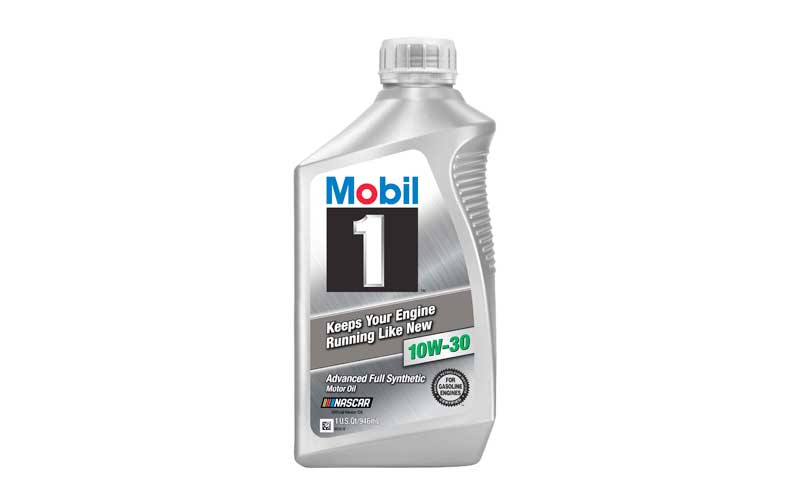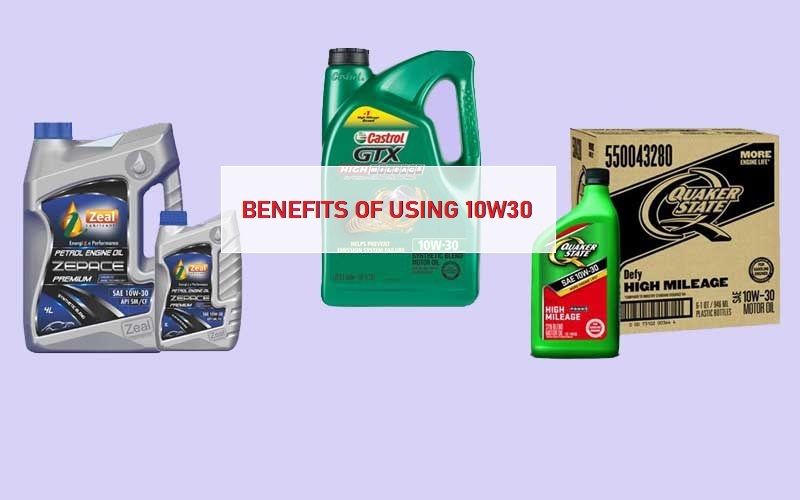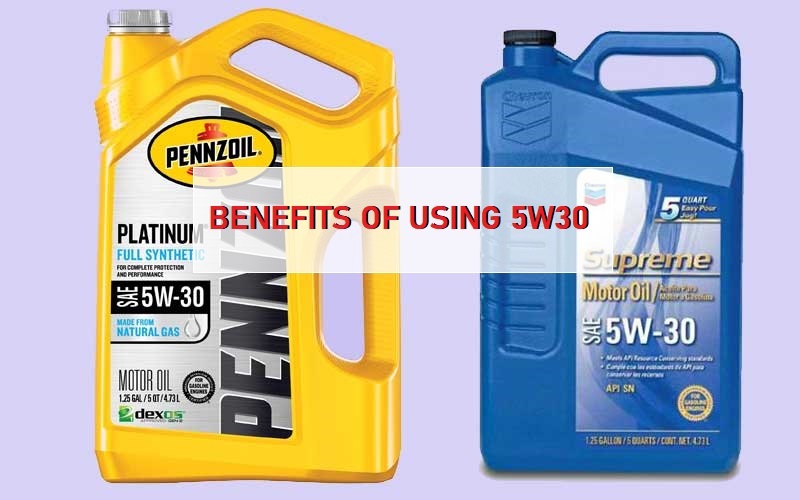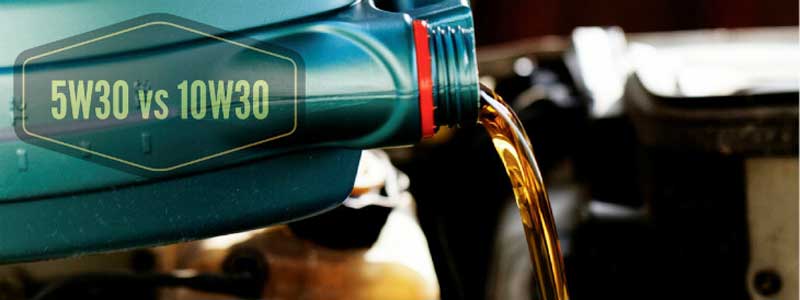Can I Use 10w30 instead of 5w30 and which is better
If you are often involved in the activity of changing your vehicle’s motor oil, then there might have been many occasions where you have wondered if you could use 10w30 oil instead of the usual 5w30 oil you use to power the engine.
Well, as it turns out, you are not alone. And there are many who often find themselves tangled in the same dilemma as you. Well, don’t worry as we have got you covered and this is just the article to help you make your decision.
What Do The Numbers Actually Mean?
You might be wondering that who the heck actually named these kinds of oils, and whoever did, why couldn’t he think of a better naming conventional, right? Well, I did use to wonder that when I didn’t know the story behind it.
The first number in the name of the type of the oil, which is 5 in the case of the 5w30, stands for a kind of measurement scale to measure how easy it is for the oil to pour at low temperatures.
For example, the oil type with the number 5 will be more easily poured at a low temperature as compared to the 10w30. So basically, an oil type with a lower number and hence a lower viscosity will pour into the engine faster and so keep it in a better condition.
The second number, which is 30 here in the case of 5w30, refers to the thickness of the oil when it fully reaches the operating conditions, which are usually reached at a very high temperature.
So obviously, a bigger number here is better because thicker oil will protect the components of the engine better than the thinner ones.
10w30 Major Specifications
There are some requirements that are set by the American Petroleum Institute, and in order to be considered good for usage, these requirements should first be fulfilled by the oil you’re looking to use for your vehicle.
All of these requirements, like API SN rating, are fulfilled by the 10w30, which essentially means that the engine is able to protect the piston on the engine from any deposits, which sometimes are caused by combustion.
10w30 comes with sludge control as well. This refers to the inability to form any sludge or gel at high temperature. It is also compatible with after treatment and seal.
Lastly, according to the European Automobile Manufacturers Association, it should also have an ACEA A3/B4 or A3/B3 rating.
Benefits of Using 10w30
There are many perks of using this motor oil.
First off, the motor oil covers all the compartments of the engine and provides them with a layer over them for their protection hence saving them from the extra friction applied, which obviously causes the wear and tear.

Moreover, the friction during the start-up of the engine is also reduced while keeping the engine cool.
Not only does the motor oil protect from wear and tear, but it also saves you from the rust on the parts of the engine. This adds a lot to the overall life of the engine and hence the vehicle.
The customer also experiences a lot smoother clutch and brake operations while keeping noises to the minimum level possible even under very high working temperatures.
The motor oil is really handy when you are dealing with high-grade fuels such as biofuels or biodiesel. With the major use of 10w30 being in the hot weather, but nonetheless, it can be used in cool weather conditions also.
Specifications of 5w30
Same as the case with the 10w30, 5w30 also meets all the standards set by the American Petroleum Institute and the European Automobile Manufacturers Association, like API SN and ACEA.
However, keep in mind that this is just the type of oil, and mostly, it does meet the above-listed criteria, but in the end, it all really depends upon the brand of the oil you’re buying.
5w30 is backed by major brands and has been approved by them as well. Some of them being Mercedes Benz, Volkswagen, and Porsche OIl.
Benefits of Using 5w30
5w30 has many features that set it apart from all the other types of motor oils available in the market. To get started with, many of the benefits include the same ones, which are also enjoyed when using the 10w30.
It also makes a top layer on all the parts of the engine, protecting it from any wear and tear through much-reduced friction and hence increasing the life of the body of the engine.
5w30 increases the life expectancy of the engine of your car by a lot, more than 10w30, if we talk about the facts. It has a much superior thermal stability when compared to the other types out there.
What this essentially means is that the properties of the oil remain similar when the engine oil is put through extreme conditions like high temperatures and pressure.

The oil is designed in a way that the fuel consumption is also minimized, increasing the fuel economy, which is due to the lubrication provided by the oil to the engine.
Last but not least, there are many benefits offered to the gasoline-powered engines by the 5w30 motor oil, amongst which the most important ones are their effectiveness during the cold starts and operation of the engine in cold weather conditions.
These light-duty gasoline-based engines do not have very high power, especially during cold start-ups, which is where the 5w30 kicks in.
Hence, 5w30 is pretty much the best option for the engine, which are low duty and have to be operated under cold climate conditions.
Read Also: 11 Truck Bed Tonneau Cover Review
10w30 VS 5w30
As we have already seen the meaning of the numbers, you probably have a rough sketch in your mind by now about the major differences in both these oils by now.
Both the above types basically have the same viscosity, which is the thickness level once they reach normal operating conditions.
However, before reaching that point, a 10w30 will move slower as compared to the 5w30 and reach the components slower, which can be problematic, especially in cold start-ups.
As anticipated, it is quite recommendable to choose 5w30 if you live in a cold region or it gets really cold around your area in winter.
Using 10w30 in such situations could result in really hard conditions when starting up the engine and could even cause unwanted damage to the vehicle’s engine.
But, 5w30 would work fine even in quite cold conditions as it would be easier to flow at a lower temperature.
However, it’s not just about getting the oil that has the most viscosity, or as people say, thickness. The requirements are different for each kind of vehicle, and not every vehicle needs the same weight of oil to operate normally when compared to the other.
So, always refer to the manual of the vehicle and choose the oil viscosity accordingly without jumping straight to the thickest oil out there.
Using some oil that is too much thick for the engine can result in increased drag as a result of increased temperature. Moreover, fuel economy also experiences a setback.
The same is the case with using oil with too low viscosity that it flies off within the internal components causing damage to the engine and decreased fuel economy as well.
So, always consult a mechanic while choosing the best oil for your vehicle as they give an estimate of the range of oils you can use for your engine, or you can refer to the manual.
Read Also: Power Stop Brakes Review
How Is Upgrading Oil Beneficial In High Mileage Vehicles?
If someone is very much comfortable with using oils with more viscosity than what’s recommended, then they definitely are the owners of high mileage vehicles.
What happens is when a vehicle grows oil, the oil passages through which the oil travels to the engine wear down, causing a reduced pressure applied from the oil to the engine.
Now, this gap somehow needs to be filled to get your vehicle back to the usual performance, or it would obviously start getting behind.
What these owners do is that they compensate this reduced pressure due to the pipes by using a thicker oil than what they used to be.
But mind you, the number of the name they increased here is the number at the end, indicating the thickness once the engine reaches the high working temperatures.
So, for instance, they could start using 10w40 instead of the usual 10w30 they used to use. This way, they get what they want, enough pressure from the oil even by having worn out passage pipes.
So, you could also consider using this trick to get an increased oil pressure if your vehicle has done a lot of mileage, and now the pressure being applied by the oil is not enough anymore.
Final Thoughts
As we saw during the course of the article, it is not such a big issue to use 10w30 instead of 5w30, depending upon your need. There are many overlapping factors between the two oils and many similarities, with many of the features being common to both kinds of oils.
So, depending on your need, feel free to use the right kind of oil for your vehicle without worrying about the side effects as long as the viscosity of the oil is within the range prescribed by the manual of your vehicle.
Share this content:






Post Comment